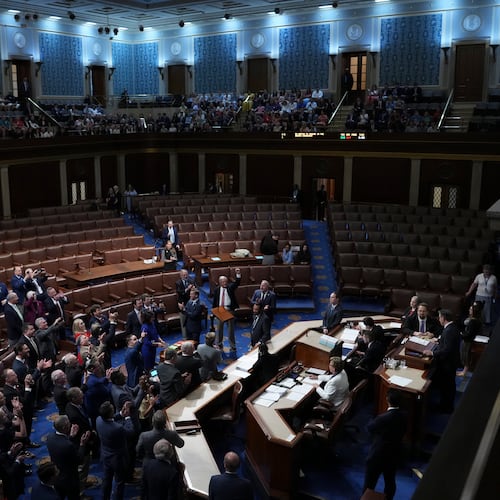No: Goal should be better transportation for all, not just for select few.
Facing congested roads and declining transportation funds, Georgia is preparing to jump into the toll-road game with both feet. High-occupancy toll, or HOT, lanes will open on I-85 on Oct. 1, a billion-dollar project is in the works for I-75, and a $20 billion plan to retrofit the rest of the region’s highways with HOT lanes is on the books.
Are we getting our money’s worth, or are these projects the latest futile attempt to pave our way out of congestion?
HOT lanes work by limiting access: to use them you must either pay the toll or have three people in your car. Instead of a fixed price the toll will vary based on demand, increasing until the number of drivers willing to pay the toll equals the available space. The more congestion, the higher the toll. This variable toll structure prevents the lane from becoming overcrowded and congested.
One should dispel the notion that these toll roads will pay for themselves because few, if any, toll roads pay their own freight. The Atlanta HOT lanes are no different, requiring hundreds of millions of dollars in public funds plus additional federal subsidies for construction.
And what do the toll roads get us?
Traffic modeling shows that the toll lanes, capped at a maximum number of drivers, will flow freely even at rush hour. But traffic conditions in the untolled lanes will remain essentially unchanged whether the toll lanes are built or not.
The toll lanes can only accommodate a small percentage of drivers at any given time, and the space vacated by the vehicles now using the toll lanes will quickly fill up with commuters who would otherwise drive at off hours, take a different route or avoid driving at rush hour altogether (a phenomenon called latent demand).
As a result, the vast majority of drivers on these roads will see little improvement in congestion even if these lanes are built.
What will it cost to use these lanes?
During rush hour, when demand is greatest, the estimated toll to drive the length of the I-85 HOT lanes would be $6; a trip down the I-75 HOT lanes could set you back $8 to $10. Two quarters for Georgia 400 this is not.
Project supporters argue that the benefit of these lanes is the option to use them on occasion. A $6 to $10 toll for each trip to and from work adds up to $3,000 to $5,000 per year. At such a high annual cost, these lanes are more likely to be a rare option rather than a daily improvement for most of us.
New transportation infrastructure, and the mobility it affords, should be an attractive asset. But will businesses and families really move to be closer to a toll road?
If our transportation projects are not attracting jobs, redevelopment and other economic activity, perhaps we should be spending our transportation dollars on something else.
These projects would spend hundreds of millions of dollars to give drivers an unappealing choice: face congestion or pay a toll. Toll roads have a place in our transportation future as a tool for raising funds, regulating demand and engaging the private sector. But these HOT lane projects exemplify the fact that we are spending more and more on roads but getting less and less in return.
We need better transportation options for all, not less congested lanes for a select few. Our money is better spent charting a new course for transportation in these corridors and providing a real alternative by investing in rail-based transit.
Brian Gist is an attorney in the Atlanta office of the Southern Environmental Law Center.
About the Author
Keep Reading
The Latest
Featured


